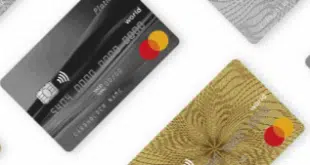Heightened tensions over interchange fees are helping to fuel expansion in the market for so-called instant issuance of payment plastics. Englewood, Colo.-based Dynamic Card Solutions, which produces software that lets banks issue Visa- and MasterCard-branded debit cards on the spot to customers, says its revenue grew 53% in 2005, without giving absolute numbers. “I'd say 2005 was our best year,” says Ron Zanotti, vice president of sales and marketing. But the 9-year-old company expects to do even better this year, with Zanotti projecting a 73% increase in sales. Not even a shift in the market from plastic cards to key fobs and other form factors, which are being adopted for contactless credit and debit payment programs, is likely to slow down growth, Zanotti says. Contactless fobs and cards are far from mass-market devices, but millions have been issued already, and programs are rolling out fast. Zanotti says his software can program a chip in a fob, wristwatch, cell phone, or other form factor for debit payment at the branch, so long as the customer brings in a device already equipped with a contactless chip. “That just becomes a personalization element,” he says. “It doesn't matter whether it's a card, a watch, a fob, or a cell phone.” Much of the growth in instant issuance stems from banks' fears that merchant resistance to rising acceptance costs?coupled with a slew of antitrust suits filed by merchants on the interchange issue–could ultimately force the bank card associations to reduce interchange rates, Zanotti says. By getting active cards into consumers' wallets on the spot, banks hope they can offset potentially lower per-transaction revenues by building up the volume of transactions per card. “Banks who are issuers see interchange being squeezed, and they want to potentially protect their assets downstream,” Zanotti says. This reaction is starting to draw larger institutions into instant-issuance, in which a bank branch uses special software, a PIN pad, an embosser, and sometimes a photo-printing machine to turn out cards for customers while they're still in the branch, using blank card stock. “Our initial sales were to smaller financial institutions, primarily credit unions,” says Zanotti. “Now we're seeing a transition to larger banks.” Dynamic Card Solutions counts 230 institutions among its clients, with Banco Popular, in Puerto Rico, being the largest in terms of branch network, with 215 locations. Now Zanotti says he has “a number” of pilots set up with larger banks that are looking to see whether instant issuance?and instant activation–will lead to higher card use. Normally, customers must wait weeks for a card in the mail, and then must call a toll-free number or use an ATM or point-of-sale device to activate it. Instant-issued cards are active almost immediately, depending on whether a bank reports the new card in real time to the network or sends up a batch file at day's end. Virtually all of Dynamic Card Solutions' clients use the company's software to issue signature-debit cards, typically with a separate debit card restricted to ATM use. The company resells necessary hardware to install a complete system in each branch, charging according to the number of branches and the number of seats needed per location. A 10-branch network, he says, would pay about $10,000 per branch.
Check Also
Mastercard Reckons With a Cap One Impact As Its Crypto Investment Grows
The payments industry may soon be wrestling with the fallout from the upcoming $35-billion merger …




